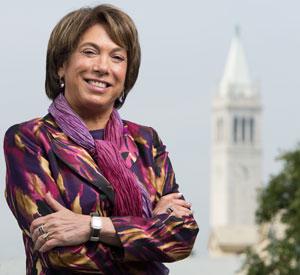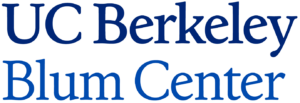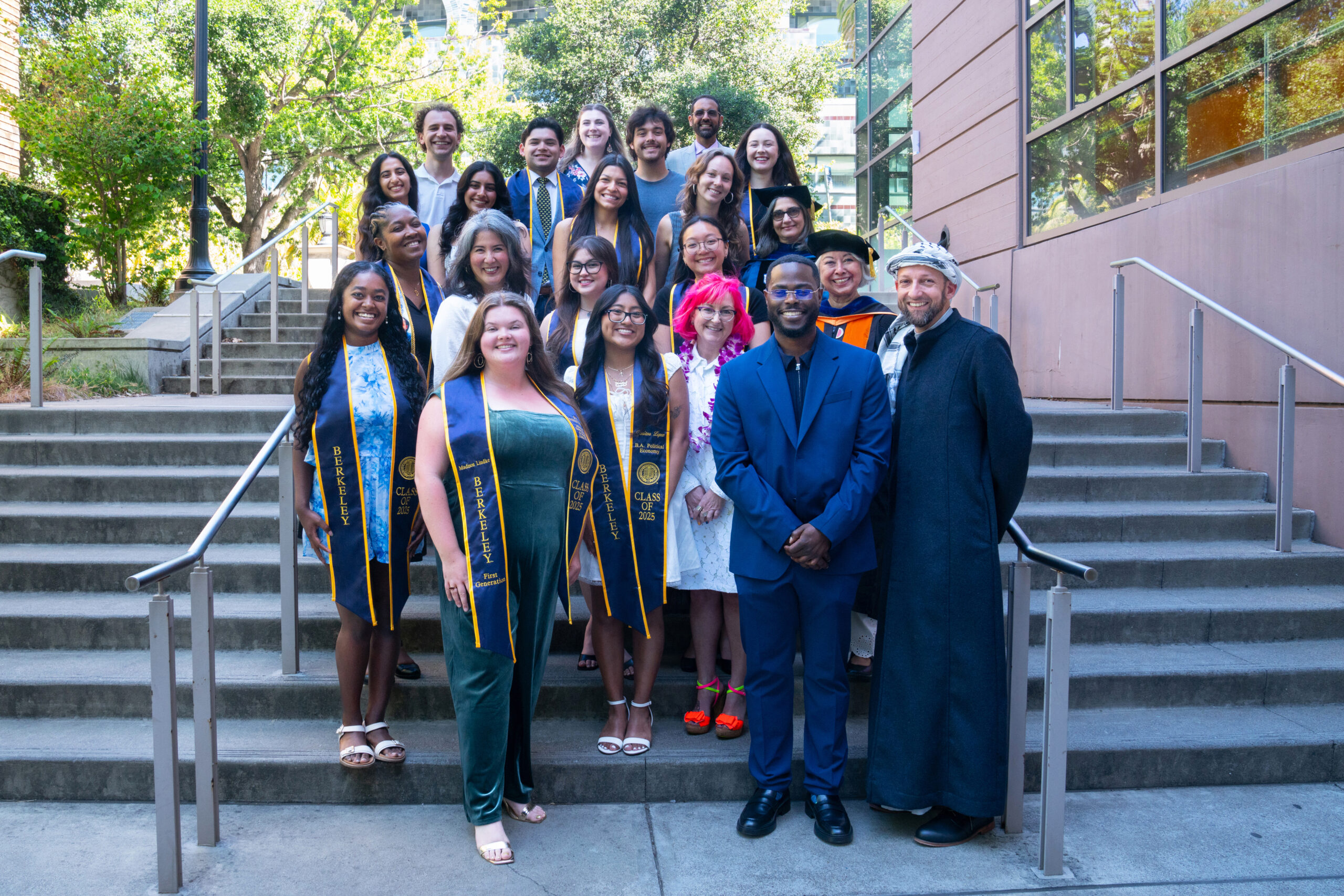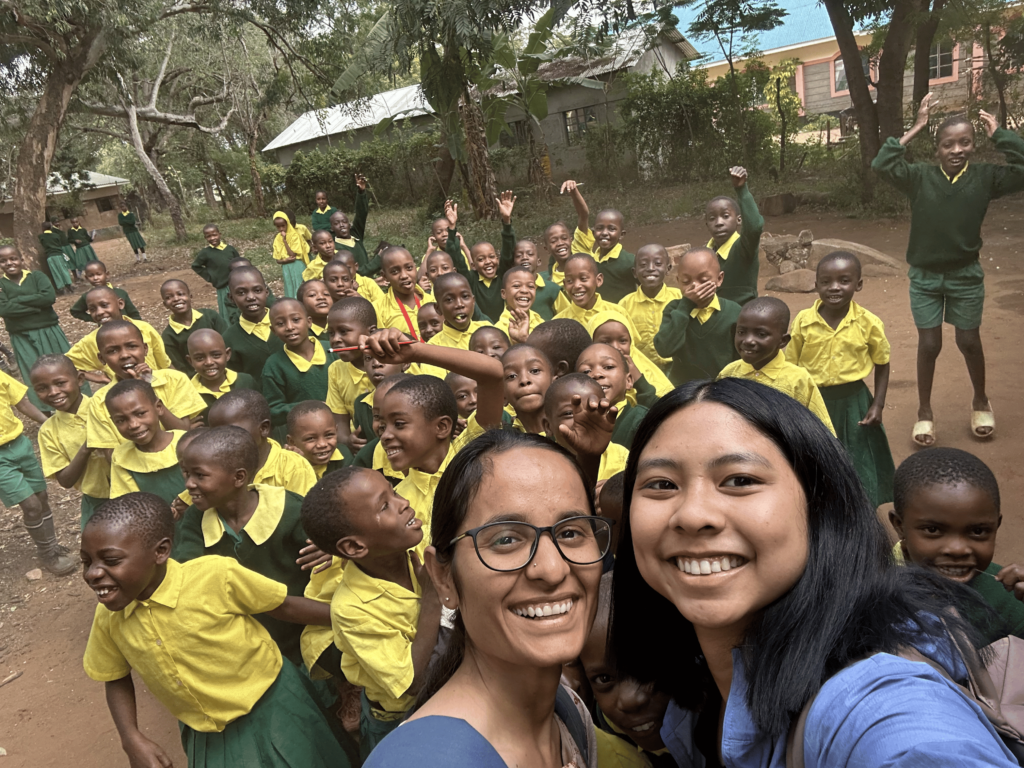By Tamara Straus
 Laura D’Andrea Tyson likes to see herself as a communicator and translator of complex economic ideas. But the world tends to see her as one of the most accomplished female economists of her generation. From 1993 to 1995, Tyson was the first female chair of the White House Council of Economic Advisors under President Clinton. From 2002 to 2006, she served as the first female dean of the London Business School. Otherwise, she has worn multiple top hats at Cal: as dean of the Haas School of Business, S. K. and Angela Chan Chair in Global Management, chair of the Blum Center for Developing Economies, and professor of Business Administration and Economics—while also serving as a board member for more than two dozen governmental agencies, private foundations, and multinational corporations.
Laura D’Andrea Tyson likes to see herself as a communicator and translator of complex economic ideas. But the world tends to see her as one of the most accomplished female economists of her generation. From 1993 to 1995, Tyson was the first female chair of the White House Council of Economic Advisors under President Clinton. From 2002 to 2006, she served as the first female dean of the London Business School. Otherwise, she has worn multiple top hats at Cal: as dean of the Haas School of Business, S. K. and Angela Chan Chair in Global Management, chair of the Blum Center for Developing Economies, and professor of Business Administration and Economics—while also serving as a board member for more than two dozen governmental agencies, private foundations, and multinational corporations.
Tyson has sharp, informed opinions on many issues: world trade, international markets, minimum wage, supply chains, underemployment, income inequality, and educational opportunity. One of the subjects that allows her to combine all these threads is “social innovation,” a catchall term for finding societal solutions through multiple and often market-based methods. Tyson believes social innovation and social impact are having their heyday at Cal. Never before have there been so many courses, research projects, and student and faculty efforts devoted to projects aiming to spur social and economic improvement. To point to this phenomenon, the university is launching a campaign this fall called “Innovation for Greater Good: What Can Berkeley Change in One Generation.” The Blum Center sat down with Professor Tyson to talk about the history of social innovation at Cal and where it is moving.
Why did you start the Global Social Venture Competition back in 1999? What in the campus or general environment prompted you to create a social innovation contest for MBA students?
Berkeley was really ahead of its time in supporting socially minded entrepreneurs. This makes sense because the university has always been a progressive place that attracts forward-thinking, diverse students—students with backgrounds that enable them to see societal challenges that aren’t being effectively addressed by either the government or business sector. The impetus for the competition really came from the students. Remember, these were the days of the anti-globalization movement and the beginning of triple bottom line investing. Our MBA students were really fascinated by the new spate of companies that aimed to sustainably support people, environment, and profit. The very name of the competition made the students’ intentions clear. “Global” was used because students wanted their solutions to have international application. “Venture” connoted something new, something risky and creative. And “social” indicated challenges unaddressed by government or the private marketplace. Goldman Sachs had just gone public and had created a foundation, which liked our competition idea and agreed to fund it. Sixteen years later, the Global Social Venture Competition is global itself. The competition brings together a significant network that receives about 600 entries annually from close to 40 countries. Finalists have included social enterprise stars like Husk Power, Revolution Foods, and d.light design.
What has changed in the environment and among the students since the contest began?
I think there’s more emphasis on technological innovations and solutions. The rapid growth of digital technologies and mobile phones has made it easier for organizations to get to the populations they want to serve. The students who are coming to Cal today really get this and want to use technology for social impact. There are also more students coming into the social impact area with engineering backgrounds. They want to be innovators and they want to team up with students from other disciplines—from business, computer science, data analytics, behavioral economics, and social psychology—to form their own organizations while still at Cal. What we’re seeing is the startup culture blossoming and bearing fruit at the university. It’s very exciting to think about where all of this will lead. The other thing that has changed in the last 15 years is the increase in funding options for the research and development of social impact projects. Social innovation students today need more knowledge about financing and the availability of contests, foundations, and venture capital sources. We are working to give them that knowledge.
Why do business schools like Haas make a distinction between entrepreneurship and social entrepreneurship? Isn’t all entrepreneurship social in that it creates jobs?
Social entrepreneurs are motivated by the desire to create new approaches to addressing unmet needs and to solving social problems. They may form a nonprofit enterprise or a for-profit enterprise to realize their goals, but even when they choose a for-profit approach, they place priority on purpose rather than on profits—or on “profits with purpose.” Traditional entrepreneurs focus on for-profit business opportunities and place priority on the profits generated by them. For-profit businesses always have the purpose of serving customers—and profitable companies also serve to employ people and generate returns for their owners. Indeed, many profitable companies make contributions to their communities and some even establish their own foundations to do so. But if a “social purpose” isn’t the original intent of a for-profit business, it is usually not considered a social enterprise. For-profit enterprises produce goods and services to satisfy market demand and demand is based on income. So markets and for-profit enterprises cannot meet the needs of those who do not have adequate incomes to buy the goods and services they need. Governments can address their needs either by raising their incomes or by providing the goods and services they need at subsidized low prices. Social entrepreneurs, nonprofits, and social enterprises also play this role and are essential when governments lack the resources or the political capital to do so.
You’ve called social entrepreneurs a “new kind of business hero.” Is it because entrepreneurs need to distinguish themselves from unethical or anti-egalitarian business practices?
No. What distinguishes social entrepreneurs is their desire to find new ways to address needs that are not met by markets and to address social challenges that sometimes result from negative market externalities, such as pollution, or from positive market externalities, such as the society-wide benefits of an educated population. Broadly speaking, the “social sector” is defined by these broad purposes and includes nonprofits, governments, social enterprises, and for-profit businesses, often working in collaboration with one another. In the U.S., the social sector includes a new form of for-profit business, called a “B” or benefits corporation that embraces both explicit profitability and sustainability goals.
You’ve been involved in the Blum Center for Developing Economies since its creation in 2006. What attracted you to the mission of the Blum Center and how has it supported social innovation at UC Berkeley?
My initial fields of study were economic development, international trade, and what used to be called comparative economics and is now called political economy. So I have always been interested in how societies try to develop and provide rising living standards for their citizens—what is today called inclusive growth. These interests very much align with those of the Blum Center. The center has made three key contributions to social innovation at Cal: through its Global Poverty & Practice undergraduate minor, through its Big Ideas @ Berkeley competition, and most recently through the PhD minor Development Engineering. The GPP minor has been an important contribution not just for Berkeley but also as a model for other colleges and universities seeking to teach students about the causes of global poverty and ways to alleviate it. Big Ideas has provided motivation and support to thousands of students seeking new new ways to address social challenges and have social impact both on and off campus and around the world. And Development Engineering is designed to help graduate-level engineers and social science students who want to use their time at the university to focus on technology for development. Through these educational programs and through the numerous research projects it supports in conjunction with its work with USAID, the Blum Center is fostering the creation of new technological solutions for inclusive economic development.
What can Cal do for its social innovation programs over the next 10 years?
UC Berkeley is a public institution with a long history of community engagement and progressive causes. Support for education and research that fosters positive social impact is deeply embedded in Berkeley’s culture, and there is strong student and faculty interest. There are numerous courses, research projects and activities that focus on social impact across the campus—at the Haas School of Business, the School of Public Health, the Engineering School, the College of Natural Resources, the Blum Center, and several other schools and departments. The Blum Center serves as an interdisciplinary hub bringing together students and faculty from many disciplines with a shared interest in poverty alleviation and economic development. Over the next decade the campus should build on the success of the Blum Center, providing support for interdisciplinary programs that allow students and faculty to design, test, and scale technological and organizational innovations that address unmet needs and social challenges. These programs should take advantage of new modes of education and collaboration made possible by online learning and online social networks.




